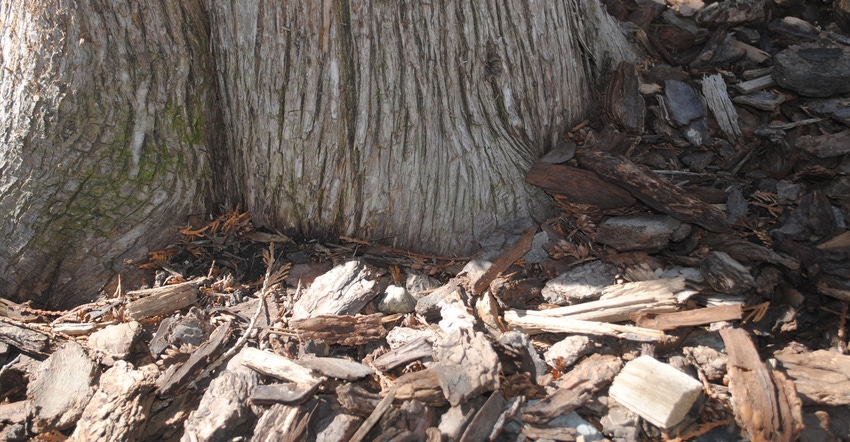
I've helped with scores of Arbor Day programs over the years for school youth around our community. During the tree planting and care portions of those sessions with students, I always ask if some of the students operate riding lawnmowers. Of those who do lawn mowing, I ask how many have inadvertently mowed down young trees, shrubs or flower beds in the process. Every year, there are a number of hands that sheepishly come up in response.
That is one reason mulching around new plantings is so important. As someone who has also driven, stomped or mowed over young tree plantings by accident, I've learned that mulching offers a visible buffer to set plantings off from the surrounding grass.
From a landscaping and agronomic viewpoint, mulch does so much more. For young seedlings, mulch slows everything down in the soil. It insulates the soil enough to slow down heating of the soil in the spring and cooling in the fall. This gives shallow young plant roots more time to get acclimated to weather extremes and the changing of the seasons.
Then, there is weed control. No one likes to pull weeds or spray around young trees. If you are hand-pulling weeds, you can often pull out seedlings with the weeds. If you are spraying, you have to protect the trees from spray drift. Mulching keeps the weeds away from the stem of young trees, protecting them from weed competition for sunlight and moisture.
Keeps ground moist
How about moisture? In arid climates, soil moisture in the summer can come at a premium. Having mulch in place keeps the soil cooler longer and conserves precious moisture to nourish the young roots when temperatures soar.
We can argue about the best types of mulching materials all day long. Through my experience, porous fabric mulches still work around large windbreak plantings in drier climates. They can be mechanically installed and provide great benefits to the survivability of those small trees as they get started. However, these fabrics do not break down as fast over time as we first thought. So, they should be removed after a few years, or at least, new slits should be cut into the fabric to make room for growing tree trunks, so the trunks are not girdled by the fabric.
Around the farmstead, I prefer natural mulches. Think about how Mother Nature provides mulch in the woods. The forest floor is not covered with growing grass, but with dead twigs, leaves, rotting wood and other woody debris. This natural mulch shades and cools the soil of the woods, adding nutrients to the soil as the mulch decomposes.
A good mulch bed should extend at least 3 feet from a tree trunk in all directions. Most forestry experts agree that the best mulches, like wood chips or ground bark, are coarse. They should be layered at a depth of about 4 to 6 inches, but not piled up high next to the tree trunk. Finer textured mulches tend to compact and mat down, so they should not be layered as deep.
Mulches are a simple way to keep mowers and sprayers away from trees, protect trees from weeds and brush, conserve moisture, and cool the soil. They simply emulate Mother Nature's own mulching mechanisms that are typically found on the floor of the forest or woodland.
About the Author(s)
You May Also Like






